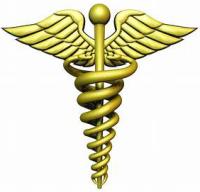By Sue Danielson, health services
The CDC (Centers for Disease Control and Prevention) emphasizes that antibiotic resistance is a persistent health issue that can spread through people, animals, and the environment; threatens our most vulnerable friends and family members; and affects nearly every aspect of life. Given the chance, these germs will infect our bodies, take up residence in our health care facilities, contaminate our food and water supplies, and move across our communities and around the globe. More than 2.8 million antibiotic-resistant infections occur in the United States each year, and more than 35,000 people die as a result. Despite this the fight against antibiotic resistance, no matter how complex, is not hopeless.
According to Robert R. Redfield, M.D., director of the U.S. Centers for Disease Control and Prevention, in order to stop antibiotic resistance, our nation must realize that we are living in a time when some miracle drugs no longer perform miracles and families are being ripped apart by a microscopic enemy. Redfield goes on to state:
- Stop playing the blame game. Each person, industry, and country can affect the development of antibiotic resistance. We each have a role to play and should be held accountable to make meaningful progress against this threat.
- Stop relying only on new antibiotics that are slow getting to market and that, sadly, these germs will one day render ineffective. We need to adopt aggressive strategies that keep the germs away and infections from occurring in the first place.
- Stop believing that antibiotic resistance is a problem “over there” in someone else’s hospital, state, or country—and not in our own backyard. Antibiotic resistance has been found in every U.S. state and in every country across the globe.
How Antibiotic Resistance Spreads:
- Germs (bacteria and fungi) are everywhere. Some help us, some make people, crops, or animals sick.
- Antibiotics kill germs that cause infections. But antibiotic-resistant germs find ways to survive.
- Antibiotic-resistant germs can multiply. Some resistant germs can also give their resistance directly to other germs.
- Antibiotics also kill helpful germs that protect us. Without the helpful germs, resistant germs have an even bigger advantage.
- Once antibiotic resistance emerges, it can spread into new settings and between countries.
Antibiotic Use Across Settings:
Antibiotics and fungicides are sometimes applied as pesticides to manage crop disease. The effect of this on human health is not well understood. Human and animal waste along with pharmaceutical manufacturing waste, can also introduce antibiotics and antibiotic resistance into the environment. Antibiotics were first used in the 1940s to treat infection, and ultimately saved millions of lives. The CDC estimates that U.S. doctors’ offices and emergency departments prescribe about 47 million antibiotic courses each year for infections that don’t need antibiotics. That’s about 30% of all antibiotics prescribed in these settings. Antibiotics are also used to treat infections in pets and food animals.
Antibiotics save lives, but any time antibiotics are used—in people, animals, or crops—they can cause side effects and can contribute to the development of antibiotic resistance. Antibiotic-resistant germs can also share their ability to become resistant with other germs that have not been exposed to antibiotics. Antibiotic-resistant infections can be difficult, and sometimes impossible, to treat. Antibiotic-resistant infections also affect animals including pets, petting zoo animals, and food animals, which can increase the spread of resistance. Resistant germs can quickly spread across settings—communities, the food supply, healthcare facilities, the environment (e.g., soil, water), and around the world. This spread increases the burden of resistance and antibiotic-resistant infections.
Stopping Spread of Antibiotic Resistance Saves Lives
Addressing this threat requires continued aggressive action:
- Preventing infections in the first place. Wash hands and surfaces.
- Don’t ask for antibiotics for things such as colds or flu. These are viral illnesses and antibiotics will not work.
- Stopping the spread of resistance when it does develop. Antibiotic-resistant germs can spread between people with and without symptoms of infection.
Resistance Also Spreads in Communities:
Resistance is increasing in the community— when infections occur, more are resistant. Stopping the spread of resistant threats in the community requires tailored interventions, such as good hygiene, routine vaccination, safer sex practices, and safe food preparation. Many of these interventions have already proven successful. Vaccination saves lives. Pneumococcal infections are common in young children, but older adults are at greatest risk of serious illness and death. It takes everyone to prevent antibiotic resistance.
Information obtained from cdc.gov. Antibiotic resistance threats in the United States 2019 Report

